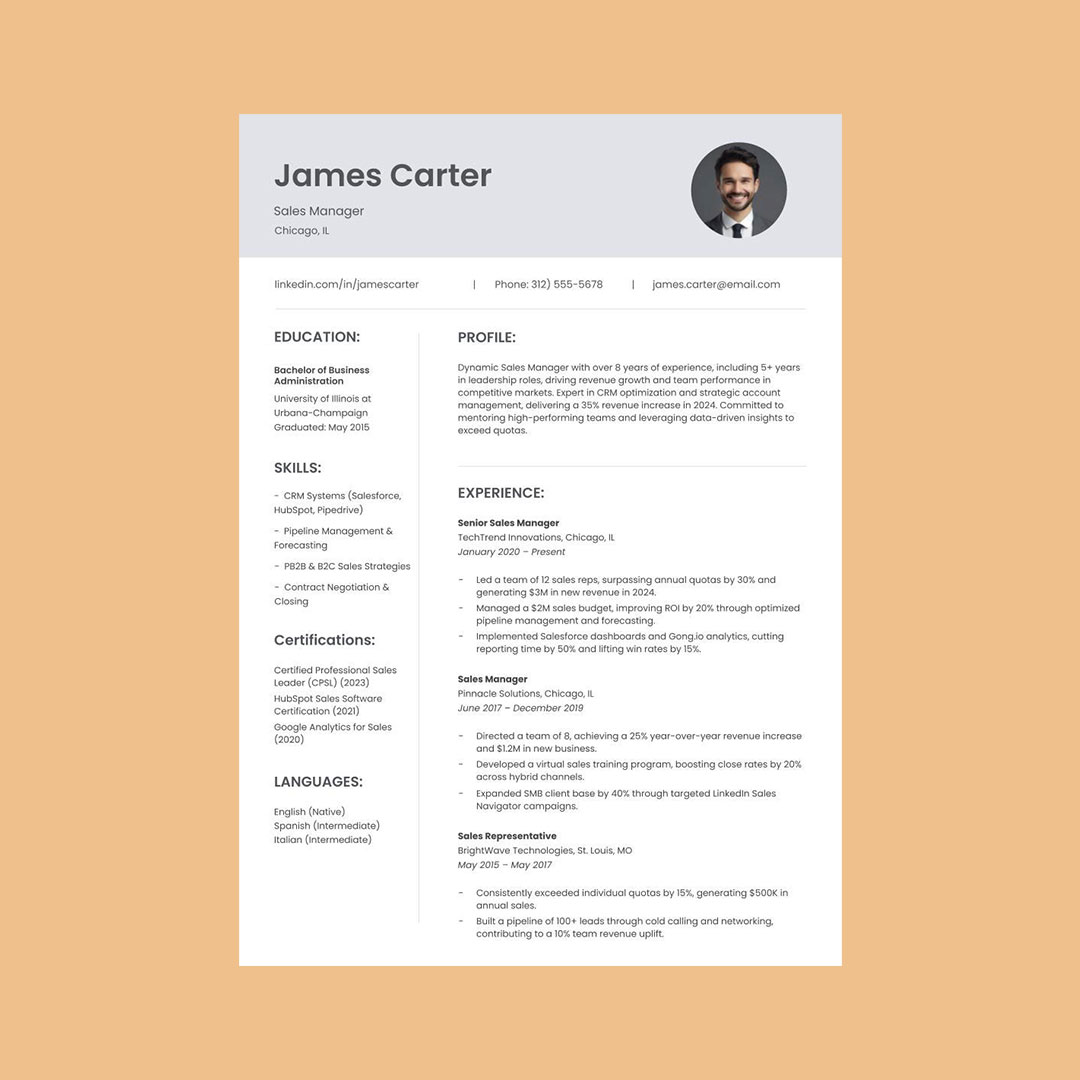Resume vs Cover Letter: Key Differences & Best Practices

For a job application, you require a resume an a cover letter but a resume and a cover letter serve different purposes. The cover letter differs from a resume Many job seekers are wondering: What is the difference between a resume vs cover letter?
Resume — a proper but concised document that outlines your work experience, skills, as well as education. It is created for fast scanning, so recruiters can read to see if you meet the requirements of the job.
A cover letter is, though, a personal introduction of why you are the right fit. It provides key factors that can help give context to your resume by emphasizing your motivation, excitement, and pertinent skills and experience that turned into an ideal match for the job.
Knowing the differences between resume vs cover letter makes your job application strong, structured and tailored to each position. In this guide, we’ll cover:
Let’s understand some of the major differences between a resume and a cover letter.
Tips you can implement for writing each document
Make your application seen with these SEO tactics
By the end, you’ll know exactly how to write a resume and cover letter to increase your likelihood of getting your dream job.
Recommended Podcast:
What Is A Resume?
A resume is a one- (or sometimes two-) page document that succinctly expresses your professional experiences in an organized format. Hiring managers scan your resume to determine if you have the qualifying skills and experience to do the job.
A cover letter, in contrast, is a custom introduction that demonstrates why you are the perfect candidate. It adds context to your resume, making it clear what drives you, your passion and suitability for the role.
Knowing what to include in a resume vs cover letter will help to ensure that your application for employment will be strong, well-organized, and personalized for each job opportunity. In this guide, we’ll cover:
- Key differences between a resume and a cover letter
- Writing each document: Best practices
- Posting Ensuring Your Application Gets Seen
By the end of this guide, you’ll know precisely how to craft a resume and cover letter that effectively complement each other and maximize your chances of getting your ideal job.
What is a Resume?
A resume is a one-page (sometimes two-page) document that presents your professional background in a clear, structured format. Hiring managers use resumes to quickly assess whether you have the necessary skills and experience for the job.
Key Sections of a Resume:
- Contact Information: Your name, phone number, email, LinkedIn profile, and (optionally) your location.
- Professional Summary: A short statement highlighting your key skills, experience, and career goals.
- Work Experience: A list of previous jobs (in reverse chronological order), including job titles, company names, dates, and key accomplishments.
- Education: Degrees, certifications, and relevant coursework.
- Skills Section: Relevant hard and soft skills tailored to the job description.
- Optional Sections: Certifications, projects, volunteer work, or awards that strengthen your application.
Best Practices for Writing a Resume:
Keep it concise: Aim for one page, unless you have extensive experience.
Use bullet points: Recruiters spend less than 10 seconds scanning a resume. Make information easy to digest.
Include quantifiable results: Instead of saying “Managed social media accounts,” say “Increased social media engagement by 40%.”
Optimize for ATS (Applicant Tracking Systems): Use job-specific keywords from the job description.
Choose a clean format: Stick to professional fonts (Arial, Calibri) and avoid complex designs that can break in ATS scans.

First Job Application Resume: How to Craft a Winning Resume with Expert Tips, Examples, and Best Practices
A resume isn’t just a piece of paper; it’s your first formal introduction to a potential employer. For many entry-level candidates, it’s challenging to stand…
What is a Cover Letter?
A cover letter is a one-page document that introduces you to the employer and highlights why you are the ideal candidate. It expands on your resume by providing personalized insights into your experience, motivations, and fit for the company.
Key Sections of a Cover Letter:
- Header: Your name, contact details, and the date.
- Salutation: Address it to the hiring manager (use their name if available).
- Introduction: Mention the job title, express enthusiasm, and introduce yourself briefly.
- Body Paragraphs: Highlight your relevant skills and achievements, explaining how they align with the job.
- Closing Paragraph: Summarize your strengths, express interest in an interview, and thank the employer.
- Signature: A professional closing (e.g., “Sincerely, [Your Name]”).
Best Practices for Writing a Cover Letter:
Personalize it: Tailor each cover letter to the specific company and job posting.
Keep it brief: Aim for 250-400 words (around 3-4 short paragraphs).
Don’t repeat your resume: Instead, provide additional context and expand on key achievements.
Show enthusiasm: Employers value genuine interest in their company.
End with a call-to-action: Politely request an interview and thank the reader.

Cover Letter for a Resume: Why It’s Essential and How to Write One
A cover letter for a resume is a key part of any job application. It complements your resume by providing context, highlighting your enthusiasm, and showcasing why…
Resume vs Cover Letter: Key Differences
| Feature | Resume | Cover Letter |
|---|---|---|
| Purpose | Summarizes qualifications | Explains why you’re the best fit |
| Length | 1-2 pages | One page (250-400 words) |
| Format | Bullet points, structured sections | Full paragraphs, professional tone |
| Customization | Generalized for multiple applications | Highly personalized for each job |
| Focus | Skills, experience, education | Motivation, personality, enthusiasm |
When to Use a Resume vs Cover Letter:
- Resume Only: When a job posting does not require a cover letter, your resume must stand alone.
- Resume & Cover Letter: If requested, a cover letter should complement your resume, not duplicate it.
How to Optimize Your Resume and Cover Letter for SEO & ATS
If you’re applying online, your resume and cover letter must be optimized for search engines and Applicant Tracking Systems (ATS).
Use job-specific keywords: Extract relevant terms from the job description and integrate them naturally.
Use strong action verbs: Examples: “developed,” “managed,” “implemented,” “optimized.”
Save files in the right format: Use PDF or .docx to ensure compatibility with ATS.
Optimize file names: Example: John-Doe-Resume.pdf instead of resume_final.pdf.
Include a LinkedIn profile: Many recruiters cross-check LinkedIn before reaching out.
Final Thoughts: Resume and Cover Letter – Which One Matters More?
Both resumes and cover letters are crucial in a job application.
✔️ A resume provides a structured overview of your experience.
✔️ A cover letter personalizes your application and adds context.
✔️ Both should be tailored to each job for maximum impact.
✔️ Optimizing for ATS ensures your application gets seen by recruiters.
Want to create the perfect resume and cover letter?
Visit Rezoom.io for expert resume-building tools and career tips! 🚀
FAQs About Resume vs Cover Letter
1. Can I use the same resume for different jobs?
Yes, but customize it slightly for each job by adjusting keywords and emphasizing relevant experience.
2. Should my cover letter include salary expectations?
No, unless the job posting specifically requests it.
3. How important is resume formatting?
Extremely important! A well-structured resume increases readability and ATS compatibility.
4. Do hiring managers actually read cover letters?
Yes! A strong cover letter can set you apart from other candidates.
5. Should I merge my resume and cover letter into one file?
No. Always submit them as separate documents, unless explicitly stated otherwise.
Start Your Job Search With Confidence!
Now that you understand the difference between a resume vs cover letter, it’s time to craft winning job application materials.
🔹 Need a professional resume & cover letter? Try Rezoom.io today! 🔹
🚀 Optimize. Apply. Succeed. 🚀
Rate this article
6 people rated this article



Comments